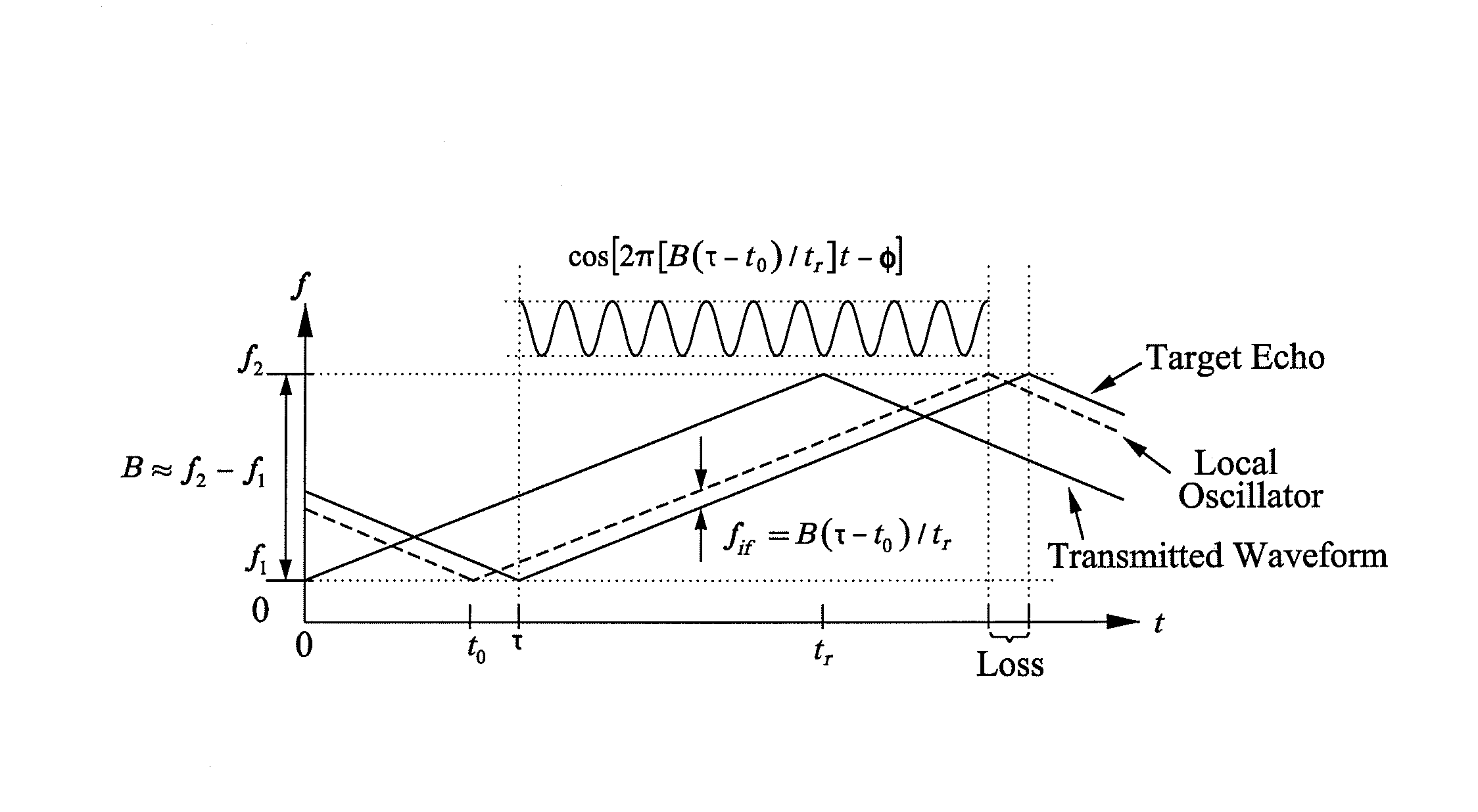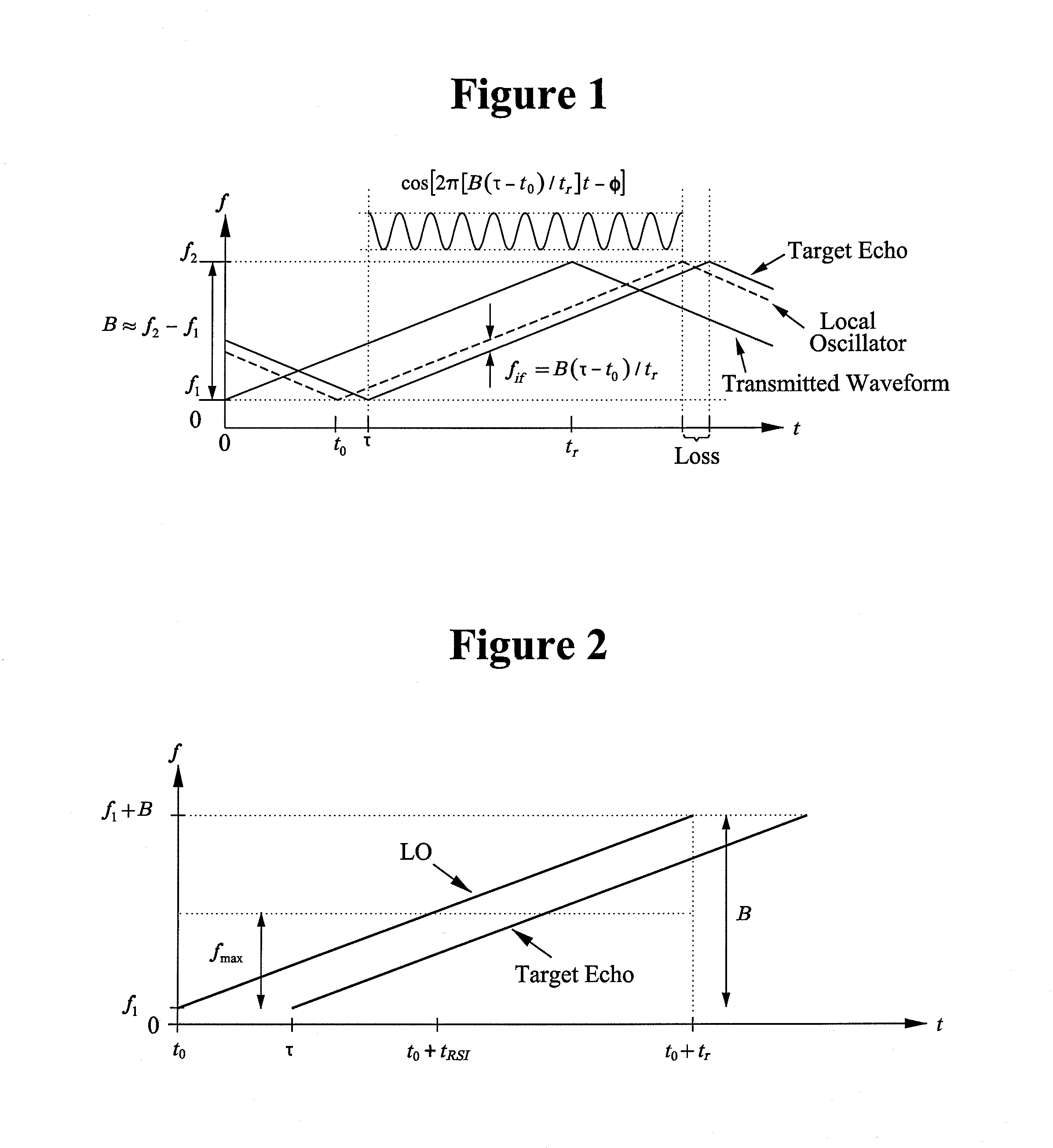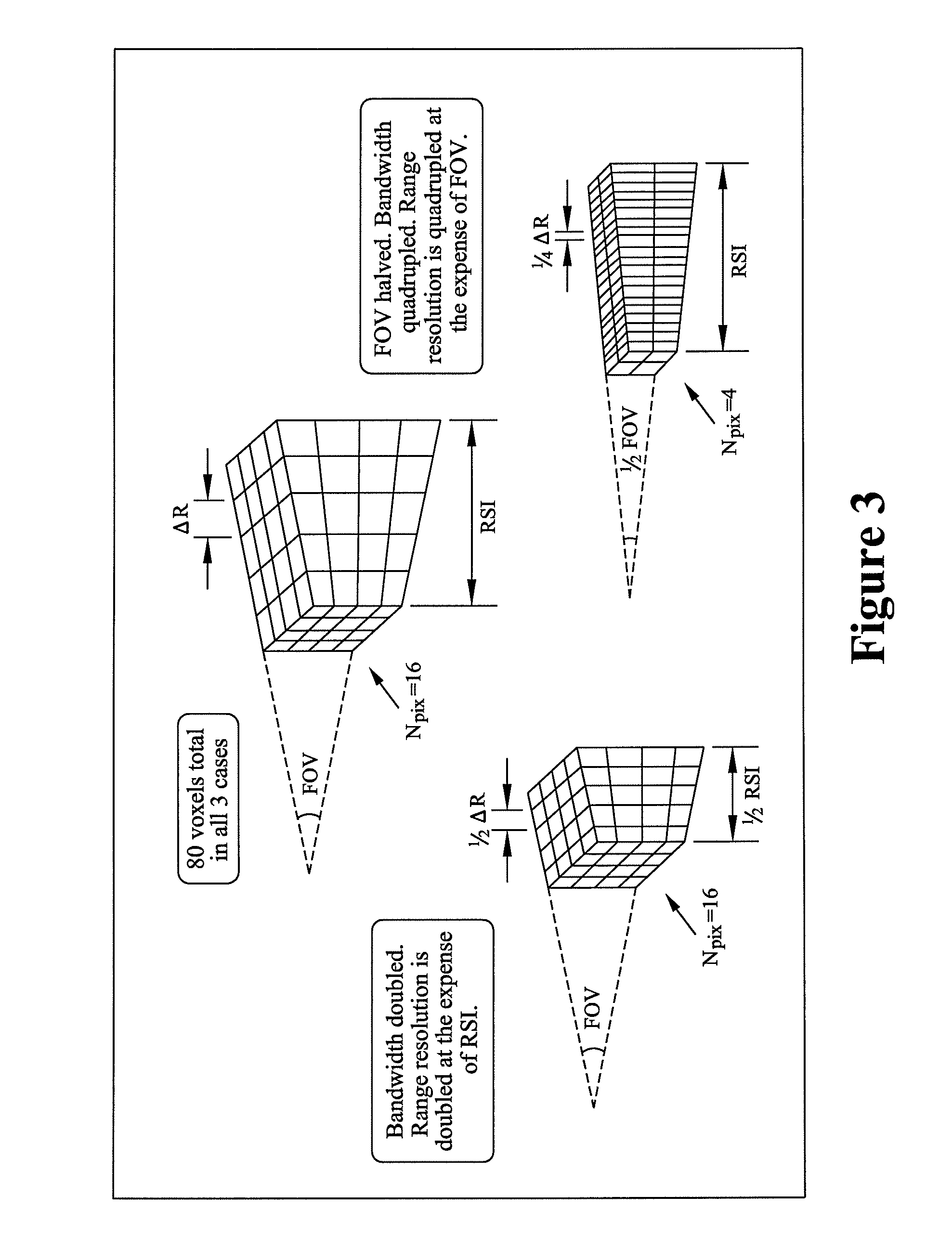FMCW 3-D LADAR imaging systems and methods with reduced Doppler sensitivity
a technology of sensitivity reduction and sensitivity, applied in the field of frequency modulated continuous wave (“ fmcw”) ladar imaging, can solve problems such as inability to provide useful range information, and achieve the effect of simple processing techniques
- Summary
- Abstract
- Description
- Claims
- Application Information
AI Technical Summary
Benefits of technology
Problems solved by technology
Method used
Image
Examples
Embodiment Construction
[0031]In the following detailed description, numerous specific details are set forth to provide a full understanding of the present invention. It will be apparent, however, to one ordinarily skilled in the art that the present invention may be practiced without some of these specific details. In other instances, well-known structures and techniques have not been shown in detail to avoid unnecessarily obscuring the present invention.
[0032]A linear Frequency Modulated Continuous Wave (“FMCW”) LADAR functions by transmitting a constant power waveform with a highly linear frequency chirp. The returned light is mixed with an optical local oscillator, which is a delayed replica of the transmitted signal, to produce a fluctuating power signal on each pixel of the camera focal plane array. The power signal has three components Pr, PLO and PAC, where PLO is the local oscillator beam power, Pr is the signal power and PAC is the power in the beat-frequency between the LO and the received signa...
PUM
 Login to View More
Login to View More Abstract
Description
Claims
Application Information
 Login to View More
Login to View More - R&D
- Intellectual Property
- Life Sciences
- Materials
- Tech Scout
- Unparalleled Data Quality
- Higher Quality Content
- 60% Fewer Hallucinations
Browse by: Latest US Patents, China's latest patents, Technical Efficacy Thesaurus, Application Domain, Technology Topic, Popular Technical Reports.
© 2025 PatSnap. All rights reserved.Legal|Privacy policy|Modern Slavery Act Transparency Statement|Sitemap|About US| Contact US: help@patsnap.com



